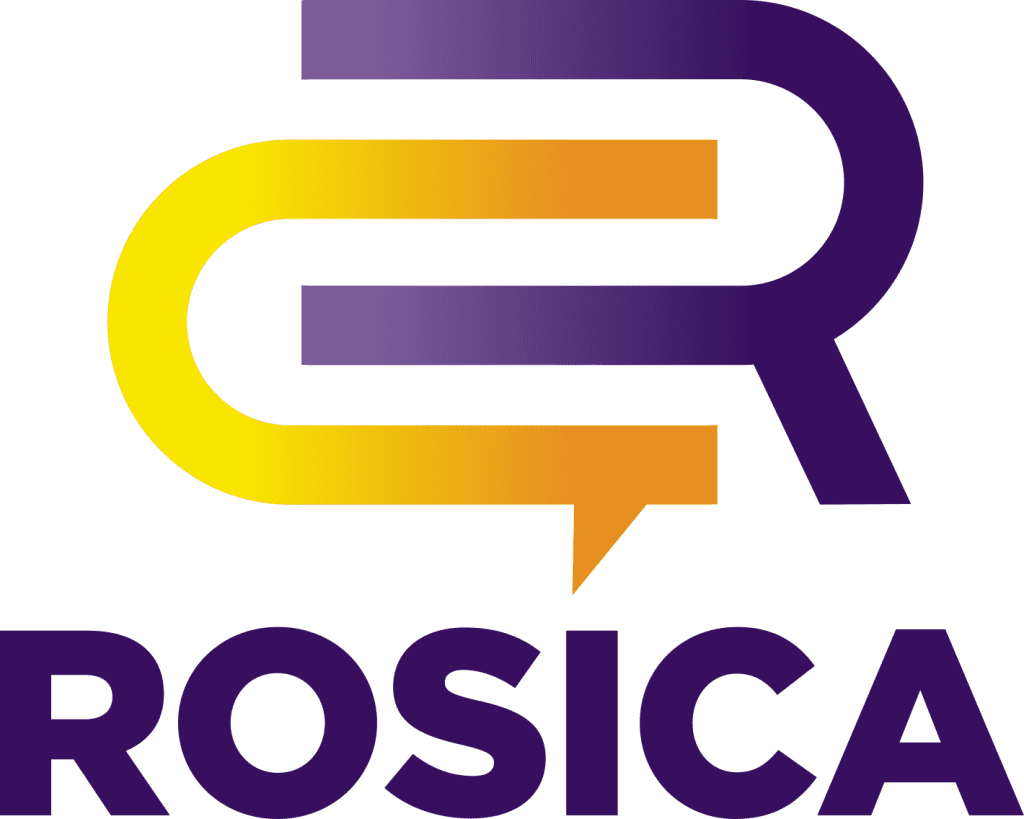We recently posted our 2024 year in review, looking at what worked for our PR agency and its clients in the industries we’re focused on—animal health, education, nonprofit, and healthcare. With approximately 11 months left in 2025, here’s what we believe will continue to move the needle. This is based not only on qualitative information but quantitative data from Rosica’s Thought Leadership Measurement Matrix™—and what’s driving results in a variety of thought leadership categories.
In our fast-evolving industry, which includes PR, corporate communications, digital marketing, content marketing, and thought leadership, to be competitive and achieve your goals, organizations must embrace technology, particularly AI, while ensuring creativity and human oversight. Combining time-tested and emerging strategies and tactics with cutting-edge tools can help your organization connect meaningfully with its stakeholders including advocates, influencers, and all relevant internal and external audiences. Here’s how to navigate this year with confidence.
Harnessing AI for Research and Personalization
Artificial intelligence (AI) is reshaping marketing by enabling deeper personalization and smarter decision-making. AI isn’t just about automation—it’s about enhancing how we engage with audiences. For example, AI tools can analyze user behavior to suggest short- and long-form messaging, products, and services tailored to individual preferences, creating more impactful experiences. Email marketing, too, has benefited from AI, saving hours of work to create custom–tailored communiques. In just minutes, AI can scrape a website and personalize messaging aimed at decision makers. Open rates and conversion rates are reminiscent to the early days of email marketing; once again, they’re highly effective due to AI.
AI and Content Marketing
AI’s ability to transform content is a game-changer. What starts as a blog article can easily be reimagined into an infographic, podcast, or short-form video using AI-powered tools. For example, platforms like Canva use AI to suggest graphic layouts, while services such as Descript simplify video-to-text transcription for podcast production. This versatility allows organizations to maximize their owned content (and the work that goes into developing it) without starting from scratch.
Using Technology to Monitor Media & Marketing Trends
AI is also invaluable for tracking industry trends and identifying successful strategies. Tools including Brandwatch analyze social media performance, audience sentiment, and competitor activity, providing actionable insights. For healthcare providers, this might mean discovering trending topics in patient education. For animal health or pet food companies, it could entail identifying shifts in pet owner preferences. With AI, you can refine your messaging so it resonates with target audiences and improves engagement and ROI. It’s imperative, however, to know when and how to use AI versus relying on (human) creativity. For example, while AI can generate smart ad copy, an ad crafted with human emotion and nuance may still outperform it. Authenticity is often required in marketing that AI cannot always deliver on when emotional purchases, decisions, investments, or donations are being made.
Growing and Measuring Thought Leadership
Thought leadership builds an organization’s reputation and helps position it as a trusted voice in a specific sector. People build thought leadership. By harnessing your team’s expertise, you can heighten your company’s credibility and influence as an expert, innovator, and resource. This creates confidence among donors, clients, investors, and partners.
From experience, we know thought leadership starts from within [an organization]. Empowering your executives to share their expertise and insights elevates your nonprofit or for-profit brand. This means hosting webinars or podcasts, writing opinion pieces, or speaking at high-profile industry conferences. A nonprofit leader, for instance, might discuss innovative fundraising strategies in a challenging [political] climate, while an education tech executive might share insights on the future of virtual learning.
Media Coverage and Visibility
The most effective thought leaders focus their teams on not just securing but leveraging earned media coverage. Appearing in respected publications or participating in interviews builds trust and expands visibility. Additionally, fostering executive training on key messaging ensures consistency and relevance in all public engagements, helping your organization stay at the forefront of industry conversations.
However, what if the stakeholders that matter most did not see the article or view the television segment? Our lives are unquestionably busier than ever. Therefore, it is imperative that organizations regularly share media results and other thought leadership content (prominently) on their websites, via email marketing campaigns, on their social media channels, and at conferences they attend. This builds major credibility, influence, and trust among stakeholders.
Harness the Power of Video, Particularly Short-Form Video
Video marketing remains a cornerstone of all digital strategies today, with short-form videos dominating platforms like Instagram Reels and Facebook. With TikTok’s potential removal from app stores, platforms like Instagram Reels may attract even more users. For organizations, this shift presents an opportunity to capture attention with engaging short-form content. Animal health companies might partner with a nonprofit that finds good homes for animals that are up for adoption, while nonprofits can showcase impactful, on-the-groundwork they do to help people become self-sufficient.
AI in Video Marketing
AI tools like Pictory and Lumen5 help streamline video production by automatically converting text into engaging videos with animations or captions. These tools are particularly helpful for nonprofits and smaller organizations with limited production budgets. With AI’s assistance, you can maintain a professional online presence and connect authentically with your audience without infringing on copyrighted content.
Building an audience through video requires a steady stream of content. Creating a content calendar to post 3-5 times weekly keeps your profile active and boosts algorithm favorability. Repurposing videos across multiple platforms (e.g., posting the same content on Facebook and Instagram) is an efficient way to maintain omnichannel presence without overextending resources.
AR and VR Content Creation
Augmented reality (AR) and virtual reality (VR) are no longer out of reach for most organizations. Platforms like Google ARCore and Unity make it possible to create immersive content with minimal coding knowledge. For education, this means more in-depth virtual campus tours, while healthcare businesses might use AR to let users virtually meet KOLs or subject matter experts. These technologies open doors to deeper, more interactive audience engagement.
Content Marketing: The Future of Engagement
Content marketing is evolving, with trends like omnichannel marketing and personalization taking center stage. Audiences expect seamless messaging across platforms. A healthcare organization might align its website content, email campaigns, and social media posts to reinforce a single key message of advocacy. Tools like HubSpot help manage these efforts, ensuring a unified voice across every touchpoint.
Emphasizing Ethical and Transparent Marketing
As audiences grow increasingly skeptical of traditional advertising, ethical and transparent marketing is more important than ever. Whether you’re sharing a thought leadership piece or promoting your latest initiative, honesty and clarity should guide your messaging. This is particularly impactful in sectors like healthcare, nonprofits, and animal health where trust is paramount.
Search Engine Optimization and Inbound Links
SEO strategies should focus on both content quality and credibility. While on-site optimization is essential, securing inbound links from reputable sources can significantly boost your website’s visibility. For example, a pet care blog cited in a trusted veterinary publication carries more weight than an ad-driven link. By focusing on creating shareable, high-quality content, you can organically attract traffic and build trust with your audience.
Integrated Marketing Communications: The Foundation of Success
Integrated marketing communications (IMC) combines multiple channels into a unified strategy, ensuring that every touchpoint delivers consistent, customer-centric messaging. Why IMC works: IMC drives brand loyalty by creating a seamless experience for consumers. For animal health brands, this could mean coordinating social media campaigns with email newsletters and learning materials provided through veterinary practice. For nonprofits, aligning messaging and delivering them across various platforms ensures that donors and volunteers receive consistent updates about ongoing needs, campaigns, and mission-driven initiatives.
IMC’s ability to enhance brand recognition and streamline customer engagement makes it a must-have strategy for organizations looking to optimize their investment in public relations, thought, leadership, and marketing.
Consistency is Key
Of course, don’t bite off more than you can chew. Start with a few of these activities and have a project manager report progress weekly to their supervisor on progress, impact, and where they’re stuck. This is the key to successful marketing integration and helps organizations leverage their content and expertise to the max.
Technology is constantly transforming PR and digital marketing, but it’s the human touch—creativity, empathy, and strategic insight—that ensures genuine connections and makes a lasting impact. By blending AI with human expertise, organizations can build trust, boost engagement, and create meaningful connections that drive long-term relationships and brand loyalty.

